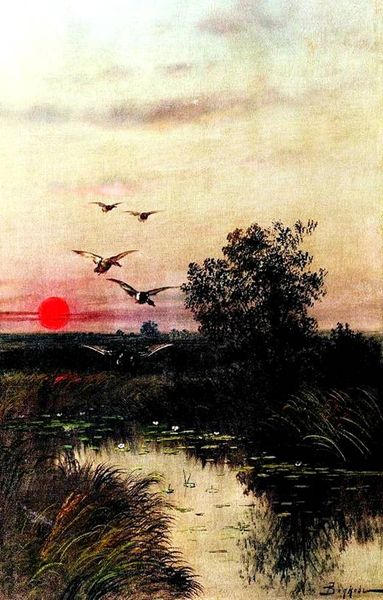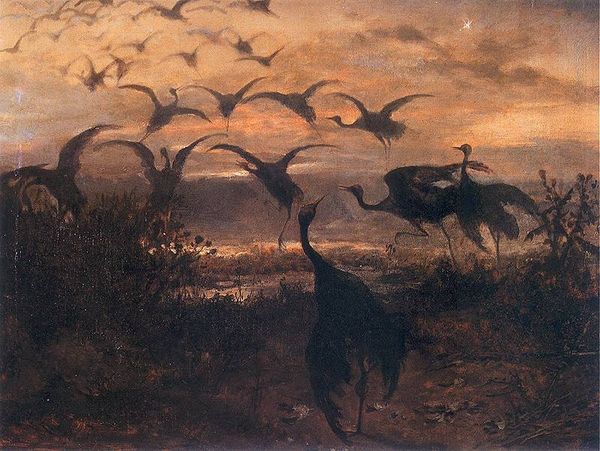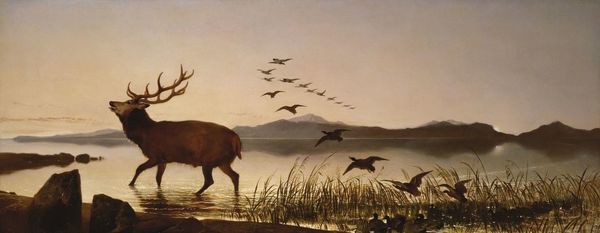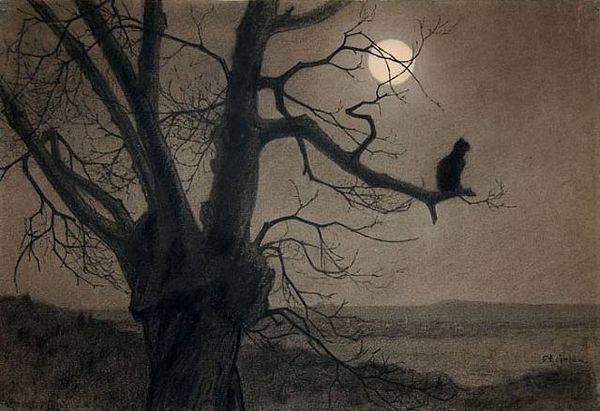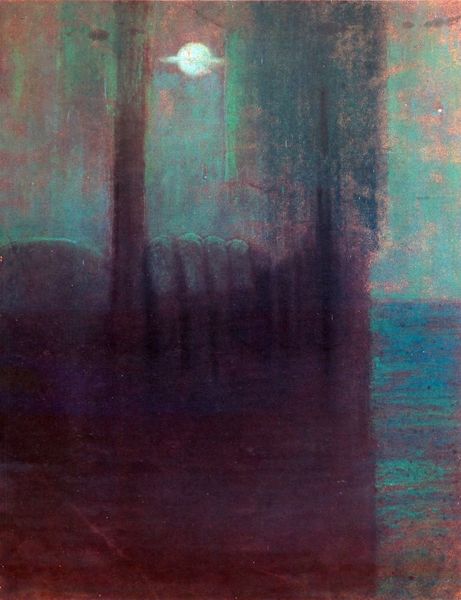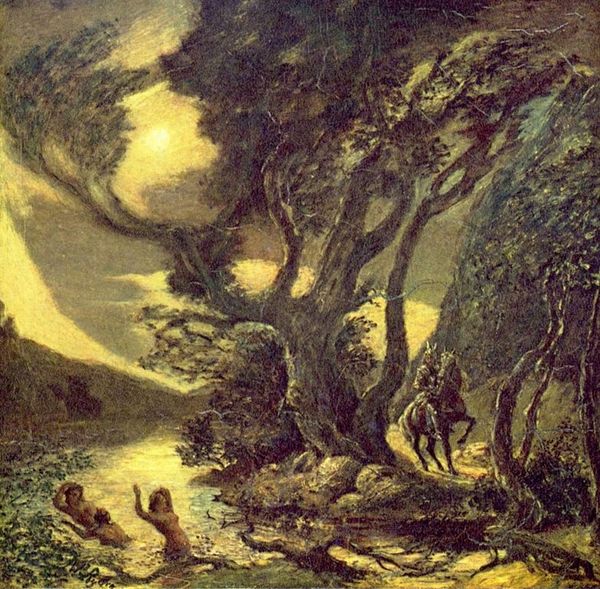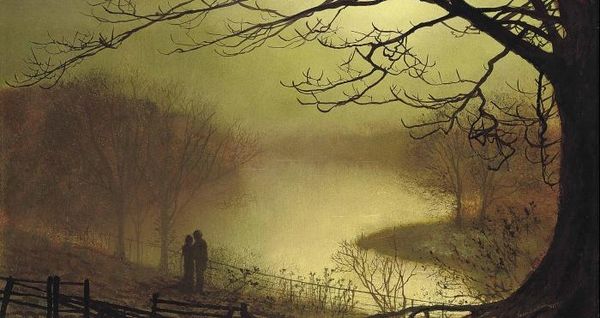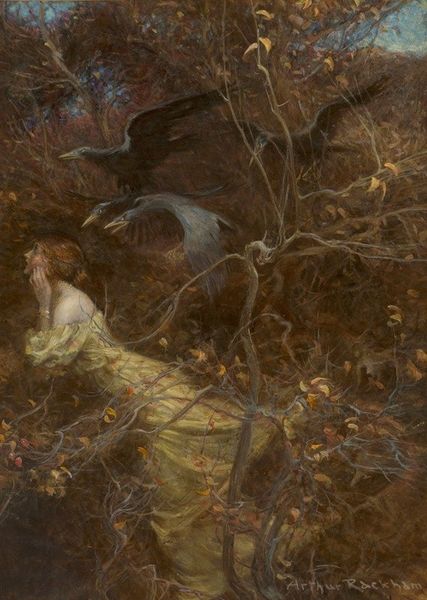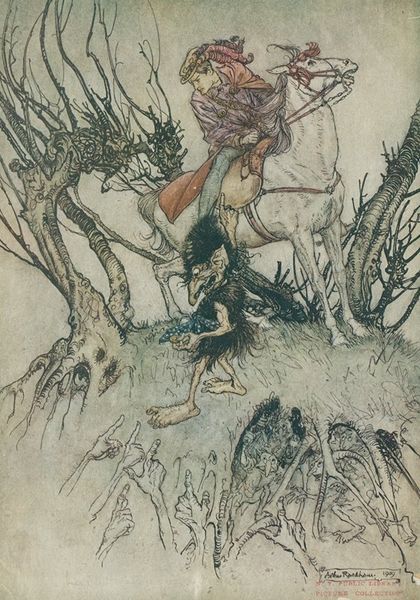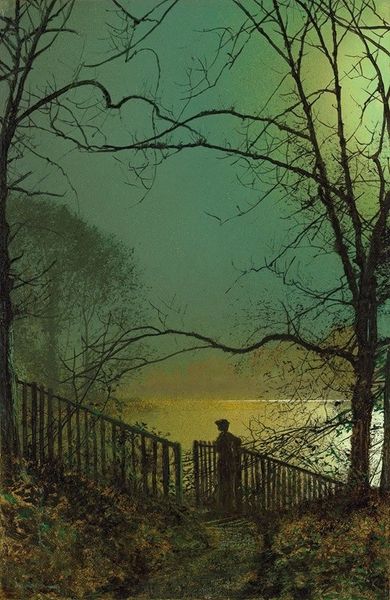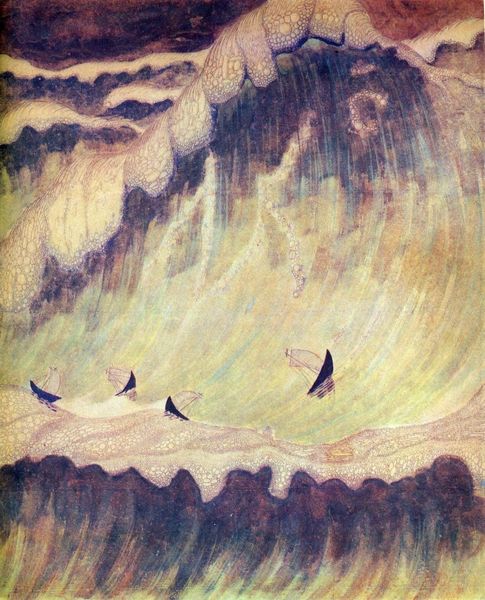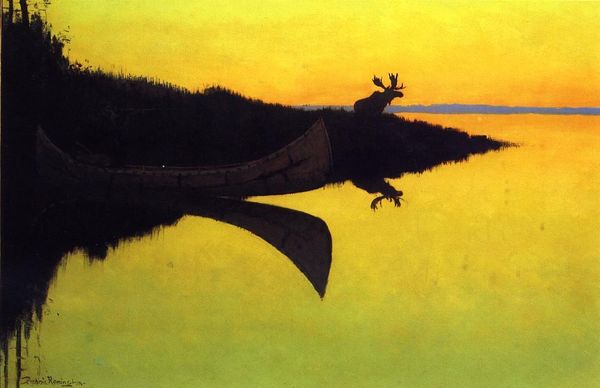
Copyright: Public domain
Curator: Here we have William Holbrook Beard’s “Phantom Crane,” an oil on canvas, completed in 1891. What’s your immediate impression? Editor: Eerie. That palette of greens, almost monochromatic, and the ghostly light give the whole scene a haunted feeling. It’s as if we’re looking at a memory, or something just beyond the veil. Curator: Beard was certainly tapping into the popular imagination of his time, moving away from direct animal portraiture into these allegorical landscapes. He presented this at a time when anxieties were rising about vanishing landscapes. Editor: That makes sense. The crane itself has often symbolized vigilance, but also solitude and mystery. The misty atmosphere contributes so much to that, almost swallowing the creatures. Are those water lilies near the water's edge? Curator: Indeed. Consider the symbolism then; the lilies representing purity and enlightenment emerging from this shadowy marsh. Beard very deliberately layered meaning to reach an expanding art market. Editor: There's almost an ambiguity to the setting. Are we looking at unspoiled wilderness, or a decaying, threatening swamp? Either way, there is also an undeniable allure, almost siren-like. Is this reflecting industrial-era longings for an impossible, idealized past? Curator: Precisely. The painting oscillates between reverence for nature and a deep, underlying disquiet about where civilization is headed, especially as museums at this time served to exhibit and often justify these very contradictions. Editor: And it's powerful because that ambivalence still resonates today, perhaps even more strongly. The image lingers with that question. Curator: It shows us art's remarkable ability to pose those questions across the ages. Thank you. Editor: Thank you.
Comments
No comments
Be the first to comment and join the conversation on the ultimate creative platform.
